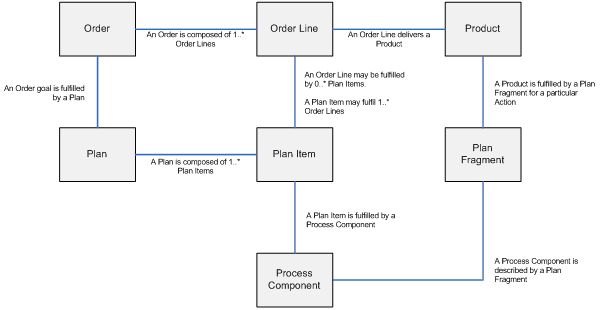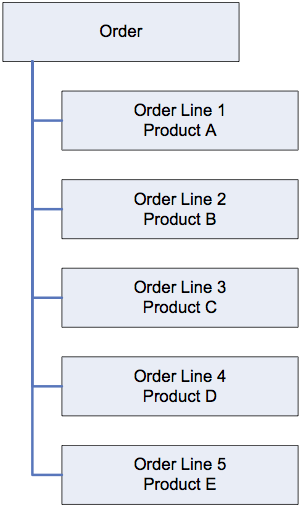Order
In Order Management, the order is a key concept. The TIBCO Order Management - Low Latency fulfills orders. Typically, an order lists products or services that required to be fulfilled. External systems might submit updates to the order but the components within TIBCO Order Management - Low Latency might not change an order.
In the context of TIBCO Order Management - Low Latency as an order is composed of one or more order lines. Each order line corresponds to a requested product.
TIBCO Order Management - Low Latency creates an execution plan for each order received. The plan is computed by using a product model that is stored in a Product Catalog. The plan is composed of one or more plan items.
Plan fragment, plan item, and process component are all inter-related concepts. To clarify:
-
Plan Item is one step in a plan that must be executed to reach the goal of fulfilling an order. The plan item is configured with the name of the Process Component that must be invoked to fulfill a product. The name of the Process Component is provided by Automated Order Plan Development during plan development and gathered from the Product Catalog by using the name of the product.
-
Plan Fragment is the model definition of a Process Component that fulfills a particular product. Products are linked to plan fragments in the Product Catalogue. The name of a plan fragment is the same as the name of the Process Component that it describes.
-
Process Component is the physical implementation of the tasks required to fulfill a product. It is described by a plan fragment and invoked as a plan item step in a plan.
The logical relationship between order and order lines is shown in the following diagram:


